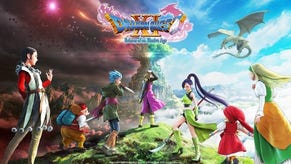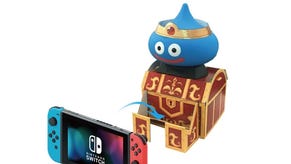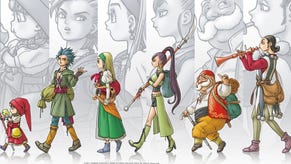Dragon Quest 11: is Unreal Engine 4 a good fit for JRPGs?
Western middleware powers the next chapter of a classic Japanese franchise.
It's been a long time coming but, at long last, we finally have a proper successor to the legendary Dragon Quest 8. The new Dragon Quest 11 is a big release not just for the series itself but also for future Square-Enix role playing games - it's one of the first in a line of big budget Japanese role-playing games to make the jump to Unreal Engine 4. Epic's middleware has become increasingly popular with Japanese developers, with the likes of Kingdom Hearts 3 and the Final Fantasy 7 remake based on the technology - but Dragon Quest 11 is the first epic-scale project to hit the market. It's out now in Japan with a Western release to follow next year.
The first thing to note is that there are actually two versions of DQ11 - a PlayStation 4 version and a 3DS release. As you'd expect, only the PS4 version has been crafted using Unreal - the 3DS game was developed by a different team and features its own unique design, including the option to play in 2D or 3D. On PS4, the game is a joint project between Yuji Horii's production company Armor Project and Orca - a studio headed by former Cavia producer Takuya Iwasaki, who had previously worked on Drakengard and Nier.
At first glance then it's clear that DQ11 continues the visual style first introduced in Dragon Quest 8. Black lines encircle each character, large colorful worlds stretch out in the horizon and players are free to explore as they see fit. Of course, DQ8 was released on PlayStation 2 first and designed for lower resolution standard definition displays. DQ11, on the other hand, joins us in the modern HD era where expectations are higher than ever.
So how does it stack up in terms of basic image quality then? Well, on a standard PlayStation 4 we're looking at 900p with reasonably effective anti-aliasing in play. It's disappointing that we're not getting a full 1080p here but it's par for the course with most high-end Unreal games - aside from Gears of War 4 and Fortnite, most large-scale UE4 games still target resolutions below 1080p.
For owners of a PlayStation 4 Pro, however, Dragon Quest 11 enjoys a massive boost in image quality - but perhaps not quite to the degree we might have hoped. Basically, we're looking at a resolution of 3072x1728, achieved using checkerboard rendering. This is then upscaled to 2160p where it joins the full resolution back-buffer displaying the HUD and user interface. When you compare the PS4 and Pro versions of the game the benefits of the higher resolution become immediately evident with sharper lines, less aliasing and cleaner overall image quality. It's a nice boost for Pro owners - and downsampling is supported for full HD displays.
However, it does highlight one issue with the checkerboard implementation - there's a visible blurring over elements in the scene such as foliage, the impact of the artefacting hitting more of the presentation harder the higher the level of on-screen motion. The issue is as clear as day in the zoomer comparison below, and yes, it's also visible when downsampling to 1080p on a full HD screen too. Basically, the reconstruction technique used by DQ11 leaves a lot to be desired. Compared to other games, like Horizon Zero Dawn, image quality is a step down. Beyond resolution though, PS4 and Pro versions are identical - down to the same textures, models and effects.
So, to what extent is Unreal Engine 4 a comfortable fit for a big-budget JPRG? Historically, Epic's engines could define the look and even the feel of a game to a certain extent, but UE4 is proving to be exceptionally flexible and none of the soul of the genre is lost in Dragon Quest 11's utilisation of the technology. Characters are rendered with great detail featuring rounded edges, sharp texture work and expressive facial animation. Looking at the world as a whole, the areas on display are reasonably detailed and manage to bring the artwork to life. Textures are intricate often with parallax occlusion maps being used in many areas. Cities are rich with nicely crafted buildings, many of which you can enter, and it's possible to jump around on top of many of them as well.
The game impresses in other areas too - loading is fast, but the real key here is the speed at which you transition from the field to battle. It's as fast as a cartridge-based game. Encounter a foe and you're whisked away to a battlefield directly pulled from the area where you encountered the enemy. Blast through the battle and the game spits you right back out to the world map without a hitch. It's the way things should be and feels fantastic. Battles themselves look great too with nice animation and plenty of suitable effects. You can even choose between two camera modes - an automatic mode which uses cinematic angles or a full manual mode that even allows you to run around the battlefield between turns.
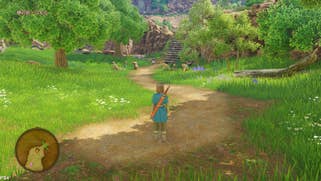
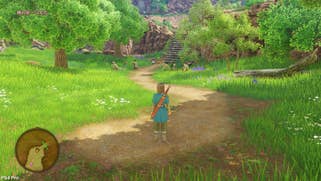



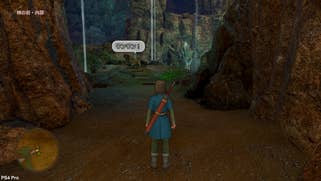


Out in the overworld, there are massive vistas with flowing grass alongside dense forests. The game uses a time of day system as well with shadows that respond to the sun and moonlight. One downside here is the prevalence of pop-in - it's not overly severe, mind you, but you'll definitely spots blades of grass drawing in at a distance which can sometimes prove distracting. Still, all of this is in service of frame-rate, where Dragon Quest 11 offers highly stable performance on both platforms on multiple fronts. Essentially, the vast majority of the experience operates locked at 30fps, with only minor dips kicking in much later into the game. Crucially though, that 30fps is delivered with correct frame-pacing - an attribute we're glad to see in place bearing in mind how improper frame delivery affects many UE4 titles.
So, while Dragon Quest 11 may not stand out as a technical marvel, what you get is a nice, stable game that successfully executes everything it sets out to deliver. The big question for the future then is how DQ11 will translate to Nintendo Switch. Utilising the UE4 version of the game would make sense, and hopes are high that Square-Enix can get this right: Sumo Digital's UE4-based Snake Pass compromised heavily on resolution but still looked great, though performance wasn't quite as solid as the PS4 version. It's still a nice version of the game but it leads us to wonder what resolution we'll see on Switch and at what frame-rate when Dragon Quest 11 hits the platform.
But in the here and now, the PlayStation 4 version of Dragon Quest 11 is a great-looking JRPG that demonstrates the flexibility of Unreal Engine 4 and the talent of its development studio. It doesn't raise the visual bar but it presents an attractive world devoid of technical problems. Couple that with super-fast loading and it's a great experience. The title is set for release in the West next year and we'll be curious to see what changes and improvements are brought to the table - there's no voice-acting at all in the Japanese version, for example. The same was true for Dragon Quest 8, but the extra development time there saw the addition of both voice acting and an enhanced soundtrack for the Western release. Maybe we'll see something similar on this sequel, but in the meantime, the very good news is that the Japanese version offers a very solid foundation for the Western release to follow.





